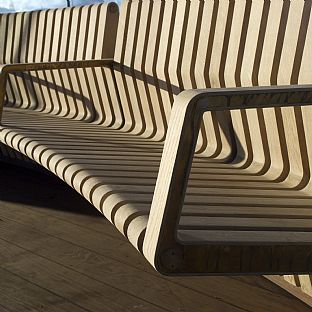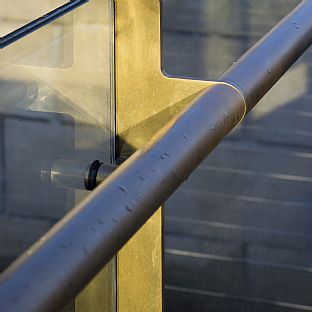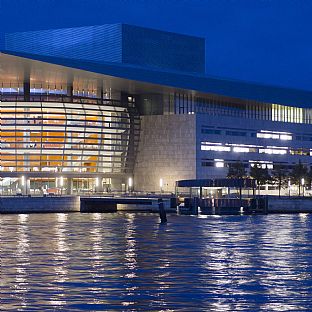Durable materials
In addition to aesthetic considerations, the pavilion's materials have also been selected for their durability, ease of maintenance and cleaning, and resistance to vandalism.
The copper, which in a few years' time will have acquired a verdigris patina, has been chosen to create an architectural link with the beautiful, protected control towers of the bridges of Knippelsbro, Langebro and Sjællandsbroen, and the characteristic copper roofs of the city. Copper ages beautifully and is resistant to the tough maritime environment.
Oak, which has been used for thousands of years for shipbuilding in Denmark, stands up well to the harsh salt water, and has been used in the bench, the floor and the ceiling.
The brass balusters, signs and railings will also patinate naturally in the harbour environment. All of the materials can cope with use.


